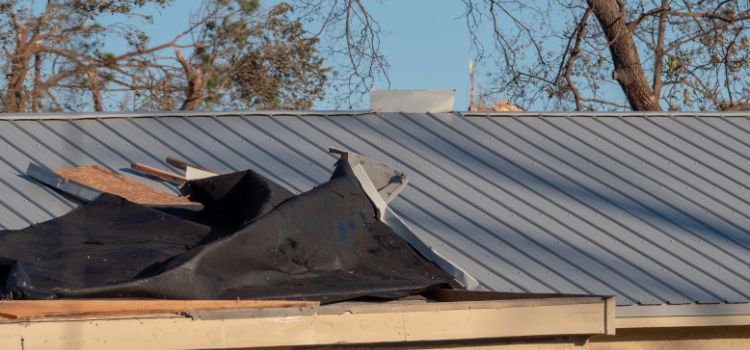When it comes to safeguarding homes from hurricanes, one of the most critical components is the roof. A sturdy roof is essential to protect the house from high winds, heavy rain, and flying debris. With more and more hurricanes battering the coasts each year, homeowners are becoming increasingly aware of the need for a strong and durable roof that can withstand these extreme weather conditions.
Contents
There are several types of roofing materials that are suitable for hurricane-prone areas. These include metal, concrete, clay, and asphalt shingles. Each material has its pros and cons, and the choice ultimately depends on several factors such as budget, style, and climate. However, the most important consideration is the ability of the roof to withstand high winds and impact from flying debris.
Factors to Consider
When it comes to choosing the best roof for hurricane-prone areas, there are several factors to consider. These factors can help determine which type of roof will provide the most protection against high winds and flying debris.
Wind Speed and Pressure
The first factor to consider is the wind speed and pressure that the roof will be subjected to during a hurricane. The higher the wind speed and pressure, the more durable the roof needs to be in order to withstand the force of the wind. Roofs that are designed to withstand high winds and pressure are typically made from materials such as metal, concrete, or clay tiles.
Roof Slope
The slope of the roof is another important factor to consider. Roofs with a steep slope are generally better at shedding wind and rain than roofs with a flat or low slope. This is because the steep slope allows the wind to pass over the roof more easily, reducing the amount of force that is exerted on the roof. Additionally, roofs with a steep slope are less likely to suffer from water damage, as water is less likely to pool on the roof.
Roof Material
The type of material used to construct the roof is also an important consideration. Some materials, such as metal and concrete, are more durable and better able to withstand the force of high winds than other materials, such as asphalt shingles. However, it’s important to note that the cost of these materials can be significantly higher than other options.
Additionally, some materials may be more prone to damage from flying debris than others. For example, clay tiles are more likely to crack or break if struck by debris, while metal roofs are more likely to dent. Homeowners should carefully consider the pros and cons of each material before making a decision.
Best Roof Design For Hurricanes
When it comes to choosing a roof for a hurricane-prone area, there are a few key factors to consider. The roof should be able to withstand high winds, heavy rain, and flying debris. The following are some of the best roof designs for hurricanes:
- Metal roofs: Metal roofs are a popular choice for hurricane-prone areas because they are durable and can withstand high winds. They are also fire-resistant and can help reduce energy costs.
- Tile roofs: Tile roofs are another good option for hurricane-prone areas. They are heavy and can withstand high winds, but they can be expensive and require special installation.
- Flat roofs: Flat roofs are not recommended for hurricane-prone areas because they are more susceptible to wind damage. However, if a flat roof is necessary, it should be reinforced with extra bracing and waterproofing.
In addition to the roof design, it’s important to choose the right materials. The following are some of the best materials for a hurricane-resistant roof:
| Material | Benefits |
|---|---|
| Impact-resistant shingles | Can withstand flying debris |
| Concrete tiles | Durable and heavy |
| Metal panels | Durable and lightweight |
It’s also important to have the roof installed by a professional who has experience working with hurricane-resistant materials. A properly installed roof can make all the difference during a hurricane.
Best Roofing Materials for Hurricanes
When it comes to protecting your home from hurricane damage, your roof is one of the most important factors to consider. Choosing the right roofing materials can make all the difference in keeping your home safe and secure during a major storm. Here are some of the best roofing materials for hurricanes:
Metal Roofs
Metal roofs are a popular choice for hurricane-prone areas because they are durable, long-lasting, and can withstand high winds and heavy rain. They are also fire-resistant and energy-efficient, which can help lower your utility bills. Metal roofs come in a variety of styles and colors, so you can choose the one that best fits your home’s aesthetic.
Clay and Concrete Tiles
Clay and concrete tiles are also a good option for hurricane-prone areas. They are heavy and durable, which makes them less likely to be blown off during a storm. They are also fire-resistant and energy-efficient, which can help lower your utility bills. However, they can be more expensive than other roofing materials and may require additional support to handle their weight.
Asphalt Shingles
Asphalt shingles are one of the most popular roofing materials in the United States. They are affordable, easy to install, and come in a wide range of colors and styles. However, they may not be the best choice for hurricane-prone areas. While they can withstand moderate winds and rain, they are more likely to be damaged or blown off during a major storm.
Ultimately, the best roofing material for your home will depend on a variety of factors, including your budget, the style of your home, and the severity of the storms in your area. It’s important to work with a qualified roofing contractor to choose the right material and ensure that it is installed correctly to maximize its effectiveness.
Installation and Maintenance
Proper Installation Techniques
When it comes to installing a roof that can withstand hurricanes, it is crucial to follow proper installation techniques. This includes ensuring that the roof is properly anchored to the structure and using materials that are rated for high winds. Additionally, it is important to have a professional roofer install the roof to ensure that it is done correctly.
One important aspect of proper installation is ensuring that the roof is adequately ventilated. Proper ventilation can help prevent moisture buildup, which can weaken the roof and make it more susceptible to damage during a hurricane. A professional roofer can help determine the appropriate ventilation for your specific roof.
Regular Maintenance
Regular maintenance is also important when it comes to ensuring that a roof is able to withstand a hurricane. This includes inspecting the roof periodically for any damage or wear and tear, such as missing or damaged shingles, cracks, or leaks. Any issues should be addressed promptly to prevent further damage.
In addition to inspections, regular cleaning of the roof and gutters is important to prevent debris buildup, which can clog gutters and prevent proper drainage. This can lead to water buildup on the roof, which can weaken the structure and make it more susceptible to damage during a hurricane.
Overall, proper installation and regular maintenance are key to ensuring that a roof is able to withstand a hurricane. By following these guidelines and working with a professional roofer, homeowners can help protect their homes and their families during severe weather events.
Conclusion
Choosing the best roof for hurricane-prone areas is crucial for protecting your home and loved ones. The decision should be based on several factors, including the roof’s durability, wind resistance, and cost.
From the research conducted, it is clear that metal roofs, especially those made from steel or aluminum, are the best option for hurricane-prone areas. They have been tested and proven to withstand high winds and heavy rain, making them a reliable choice for homeowners in these regions.
Although metal roofs may be more expensive than other options, they are a smart investment in the long run, as they require little maintenance and have a longer lifespan. Additionally, metal roofs are energy-efficient, which can help reduce energy costs over time.
It is essential to work with a professional roofing contractor to ensure that the roof is installed correctly and meets all building codes and regulations. Homeowners should also consider regular inspections and maintenance to ensure that their roof remains in good condition and can withstand future hurricanes.
Overall, choosing the right roof for hurricane-prone areas is a critical decision that should not be taken lightly. By selecting a durable, wind-resistant, and cost-effective option, homeowners can protect their homes and loved ones during severe weather conditions.

